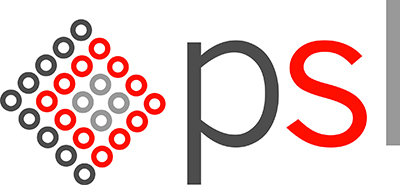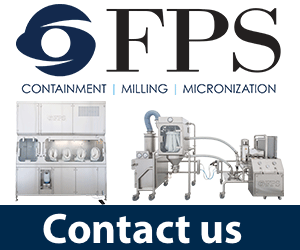Planned maintenance at pharmaceutical facilities, and specifically on high containment process equipment, must be carried out to not only prevent problems arising during production, but also to minimise the risk of potential harm to the operators and the environment over time as well as ensuring the equipment is still performing efficiently.
If maintenance activities are not planned proactively, then the chance of emergency breakdowns increases, which could result in a loss of production, delayed deadlines, higher costs to resolve the problem and exposing the facility and workers to a whole range of risks.
A detailed maintenance strategy ensures process equipment is more reliable and therefore the entire manufacturing plant runs smoothly.
When working with high containment isolators and gloveboxes (Fig. 1), additional hazards have to be taken into account.
The equipment runs on negative pressure to protect the operators and environment from exposure to potent substances and the gloveboxes are often purged with nitrogen because of the high explosion risks linked to the handling of dust and solvents.
An emergency breakdown repair on such installations can involve high risks with operator exposure above the recommended levels. In addition, full personal protection equipment (PPE) air suits may be required, depending on the issue being faced at the time, causing restricted access to machinery when performing the repair.
Planned maintenance programmes not only prevent failure and production interruption but also ensure that the installation remains safe to use at all times. Over time, a high containment isolator may become unreliable if not routinely inspected. If faults have been diagnosed early, risks are better managed and the safety of the operators is sustained.
Today’s glovebox will include the necessary controls and safety notifications. For example, if the high-efficiency particulate air (HEPA) filters need changing, a notification will be displayed on the gloveboxes’ Human Machine Interface (HMI). Despite such notifications, maintenance still requires planning and control.
Local work regulations, such as the UK Provision and Use of Work Equipment Regulations 1998 (PUWER) provided by the UK Health & Safety Executive (HSE), require work equipment and plants to be maintained so that they remain safe and maintenance operations are carried out safely. Such regulations require that equipment provided for use at work is:
- Suitable for the intended use
- Safe for use, maintained in a safe condition and inspected to ensure it is correctly installed and does not subsequently deteriorate
- Used only by people who have received adequate information, instruction and training
- Accompanied by suitable health and safety measures, such as protective devices and controls
A high containment isolator will continue working safely and efficiently if the below steps are followed:
- Qualified installation by the equipment provider
- Operator and maintenance worker continuous training
- Annual preventive maintenance from the equipment provider
- Routine inspection of critical components
- Replacement of worn-out parts
- Recommended spare parts stock refurbishment
- Revalidation and Containment Performance retesting
Planned maintenance
Manufacturing facilities should establish a planned maintenance programme to reduce risk, as well as having a reporting procedure for operators who may notice problems while working on the installation. Before any maintenance activity starts, the suitable specialists should be vetted according to the nature of the operation. Working with the equipment provider to plan yearly maintenance is the safest way to carry out maintenance. Experienced service engineers will carry out an annual service on the installation to ensure the equipment is still performing optimally (Fig. 2).
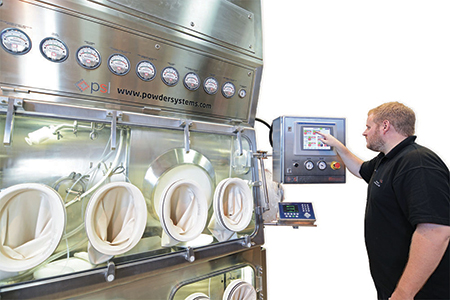
Fig. 2: Maintenance service checks should be made annually
The equipment provider will replace worn-out or consumable parts deemed necessary, performing fully functional testing (similar to a Factory Acceptance Test), with special attention being made to critical safety features, such as the nitrogen purge system and the testing of all safety interlocks. The isolator containment performance will be verified in accordance with industry guidelines, such as ISO 10648-2 for leak rate testing.
Such annual maintenance requires the installation to be shut down for a few days and it is important to work closely with the service provider to ensure minimal disruption of production. Use any downtime where practically possible for maintenance activities and if the equipment provider is called to site, prepare for their arrival well ahead of time, so that all consumable parts that may be required for their visit are in stock, as certain items can take a number of weeks to become available.
When a high containment isolator has not been used for a period of time, it is also advised that the necessary maintenance activities are undertaken to ensure piece of mind during the production campaign.
Between planned maintenance it is highly recommended to routinely inspect key components that have a safety-critical role in the installation, especially with high containment isolators due to the hazardous nature of what they contain. The maintenance staff should be inspecting components such as gaskets and seals for leaks or signs of wear, and checking the integrity of the pneumatic and hydraulic lines. The gloves should be routinely tested to ensure there is no breach of containment, for example pin holes, using suitable glove integrity testing devices (Fig. 3).
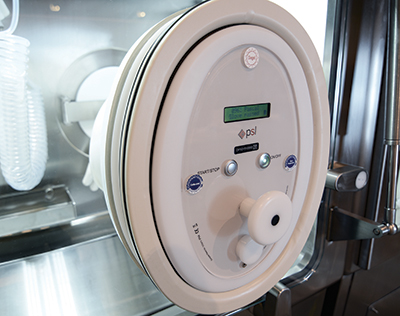
Fig. 3: Glove integrity testing device.
Operators should report any alarms, notifications or any abnormal operating incidences. For example if the differential pressure gauge for the HEPA filter is out of the correct band, it should be changed by trained personnel as soon as possible.
Avoiding unforseen delays
Maintenance needs careful planning when it is to be carried out in-house. Following the manufacturer’s maintenance instructions and producing a safe system of work are essential steps to follow, to avoid unforeseen delays and to reduce the risks of mistakes. All maintenance staff need to be competent and have followed appropriate training from the equipment provider before undertaking such activities taking in to account staff turnover. The containment provider should provide such training to ensure the correct maintenance instructions are still followed over time.
Performing routine maintenance will not only reduce the risk of loss to the business and its personnel, but will greatly improve the lifetime of the installation, ensuring maximum return on investment to the business.
The preventative maintenance agreement is not intended to be “insurance” against breakdown, but a programme to maximise system availability and prevent/reduce downtime. When handling potent compounds down to nanogramme levels, the containment performance or Occupational Exposure Level (OEL) test should be routinely tested to ensure product, operator and environment protection (Fig. 4).
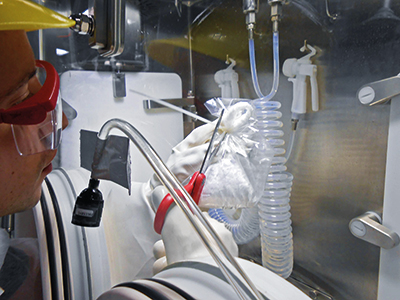
Fig. 4: Containment performance testing on site, image by VEGA Environmental Consultants
Annual maintenance will not cover containment performance testing as per the ISPE Good Practice Guide (“Assessing the Particulate Containment Performance of Pharmaceutical Equipment”). Such testing should be included in the equipment maintenance strategy according to the site health and safety regulations.
More often than not, this important testing can be overlooked in the industry after the initial installation while the drug potency is becoming increasingly toxic.



